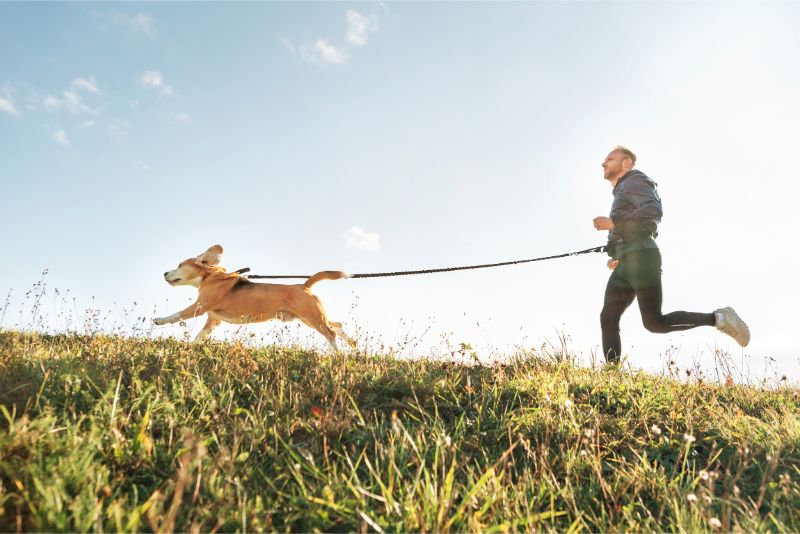
Running is a great activity for humans and dogs alike. Our four-legged friends make the best running partners; dogs want to be with us, they have boundless energy, and it’s hard to skip a workout with those puppy dog eyes waiting expectantly at the door.
There are plenty of “do’s” for running with your dog, and a few don’ts as well. Come along with Clairmont Animal Hospital as we check out the basics of a running program with your best fur pal.
The Do’s Of Running With Your Dog
When it comes to running with your dog, we recommend starting with a check-up. Just as with people, you want to have a clean bill of health before starting any new exercise program.
Other Do’s:
Start slowly: After assessing your dog’s fitness, start a training program that increases time and distance gradually. Don’t expect your couch potato to jump up and run 5 miles with you the first day.
Do tote your dog’s own water: Water is critically important, not only to prevent dehydration but also to stall heat exhaustion. You never know if you’ll be able to find water while out for a run, and allowing your dog to drink from creeks, ponds, or puddles puts them at risk for intestinal parasites and infectious disease. Carry your own water (and your dog’s, too) plus a collapsible bowl or dog water bottle.
Do head for the trails: Trail running with your dog is some of the best running there is. It’s cool, shady, and dirt and grass are easier on paws and joints. Be sure to check ahead that dogs are allowed, and follow all safety guidelines. And don’t forget parasite protection!
Do give it a try: Running with your dog is great for their mental health and helps them release excess energy. And with over 50% of pets in the US either overweight or obese, it is also a great way to maintain weight and muscle tone. Studies show that lean dogs are less at risk for diabetes, kidney and heart disease, arthritis, and even cancer.
The Don’ts Of Running With Your Dog
Don’t assume your dog is a runner. There are some dogs that simply don’t enjoy it. And there are also some breeds that are predisposed to overheating, and running with them could be dangerous, as well. If your dog falls into these categories, consider another activity.
- Short faced or brachycephalic breeds such as pugs, bulldogs, Boston terriers
- A giant or toy breed
- Long backed, short legged dogs such as Basset hounds, dachshunds
Other Don’ts:
Don’t start them too young: Very young dogs are still growing and their joints are not yet developed to withstand the strain of running. Large breed dogs develop more slowly, so check with us first if you’re starting a running program with your young dog.
Don’t forget basic training: Basic obedience training keeps dogs safe in every situation. Your dog needs to know “leave it”, “come”, “stay” and “sit” commands in addition to how to stay with you on a loose leash. Dogs should also know how to turn with you as you’re running. Teach your dog how to walk on a loose leash first, which can help ensure your own safety once you start running together.
Don’t run when it’s hot out: Running with your dog in hot or humid weather can put her at risk for overheating. Stick to runs at cooler times of day– early morning or evening. And, make sure that surfaces like asphalt, concrete, and sand aren’t too hot for your dog’s sensitive paw pads.
Don’t ignore warning signs: Watch your dog closely both during and after a run for signs of overheating or heat exhaustion. Heat stroke can come on quickly and it’s a serious and life threatening medical emergency. If you notice the following, your dog has the early signs of heat stroke.
- Drooling
- Excessive panting
- Dark red gums and tongue
- Seeking shade
- Trying to stop and/or lie down
- Weakness
If you notice these signs, stop immediately. Get your dog into the shade (or air conditioning). You can wrap their body and paws with towels doused in tepid (never cold) water. Seek treatment from your veterinarian immediately.
Are you feeling ready to hit the pavement (or trails?)? We hope this has given you a bit of inspiration to start or continue running with your dog. If you have any questions or concerns, please don’t hesitate to give us a call.

